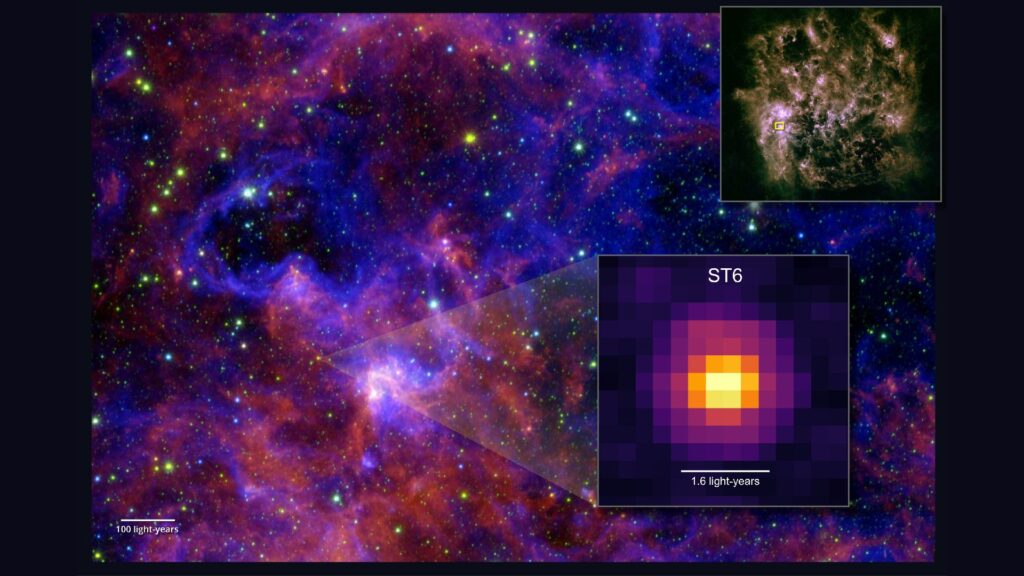Scientists have discovered, for the first time, the complex building blocks of life in the ice surrounding a star in the Milky Way.
Using the James Webb Space Telescope (JWST), researchers detected five large carbon-based compounds around protostars in the Large Magellanic Cloud, a small galaxy that orbits close to the Milky Way. The discovery could help scientists learn how complex molecules formed in the early universe, according to research published Oct. 20 in Astrophysical Journal Letters.
you may like
“What we learn in the Large Magellanic Cloud can be applied to understanding more distant galaxies when the universe was younger,” study co-author Marta Sewilo, an astronomer at the University of Maryland and NASA’s Goddard Space Flight Center, said in a statement. “The harsh conditions tell us more about how complex organic chemistry can occur in primitive environments where there are far fewer heavy elements such as carbon, nitrogen and oxygen available for chemical reactions.”
In March 2024, researchers aimed JWST at a developing star called ST6 in the Large Magellanic Cloud. Using instruments that measure infrared light, they discovered five complex carbon-based molecules in the ice around the star: methanol, acetaldehyde, ethanol, methyl formate, and acetic acid.
Of the five molecules, only methanol has been detected so far in protostars outside the Milky Way. Acetic acid, the main component of vinegar, had never even been conclusively found in space ice until now.
“Before Webb, methanol was the only complex organic molecule definitively detected in the ice around protostars, even in our galaxy,” Sewilo said. “The superior quality of the new observations has allowed us to collect an unprecedented amount of information from a single spectrum.”
The researchers also discovered a signal that may be caused by a chemical called glycolaldehyde, but further research is needed to confirm its presence. Glycolaldehyde reacts with other molecules to form a type of sugar called ribose, which is a key component of ribonucleic acid (RNA), which is essential for life.
The discovery of such complex molecules in the Large Magellanic Cloud suggests that chemical reactions on the surface of dust particles can produce complex molecules even under harsh conditions, the researchers said. In future studies, the researchers plan to look for these and similar molecules around other protostars, both in the Milky Way and in nearby galaxies.
“This discovery represents a major advance in understanding how complex chemistry emerges in the universe and opens new possibilities for studying how life originated,” Sewilo said in a statement.
Source link

